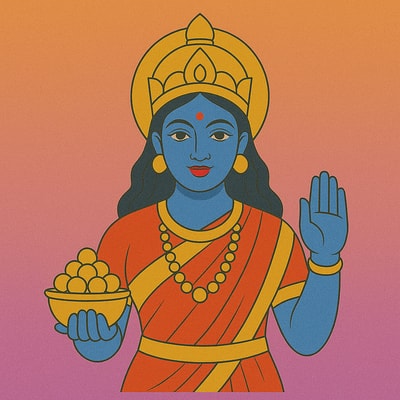
Santoshi Mata
Santoshi Mata is a relatively new goddess in the Hindu pantheon, primarily worshipped by women in North India and Nepal. Her worship gained significant popularity in the 1960s after the release of the Bollywood film 'Jai Santoshi Maa' in 1975. She is revered as the 'Mother of Contentment' and is believed to grant wishes, bring happiness, and ensure prosperity to her devotees. She is typically depicted as a four-armed goddess, holding a trident and a sword, and seated on a lotus or a lioness. Her hands often display the Abhaya (fearlessness) and Varada (boon-granting) mudras. The main form of her worship involves observing the Santoshi Mata Vrat (fast) on Fridays, where devotees abstain from sour or bitter foods and offer jaggery and roasted gram. Her legend emphasizes the importance of faith, patience, and purity of heart in achieving inner peace and fulfillment.
Alternate Names
Symbols
Trident (Trishula)
Sword
Jaggery and gram (offered during her Vrat)
Weapons
Trishula (trident)
Khadga (sword)
Genealogy
Daughter of Lord Ganesha and his wives Riddhi and Siddhi (personifications of prosperity and spiritual power); sister of Shubha and Labha.
Role & Significance
Goddess of satisfaction, contentment, joy, happiness, and desires fulfillment.